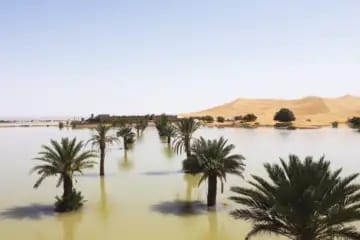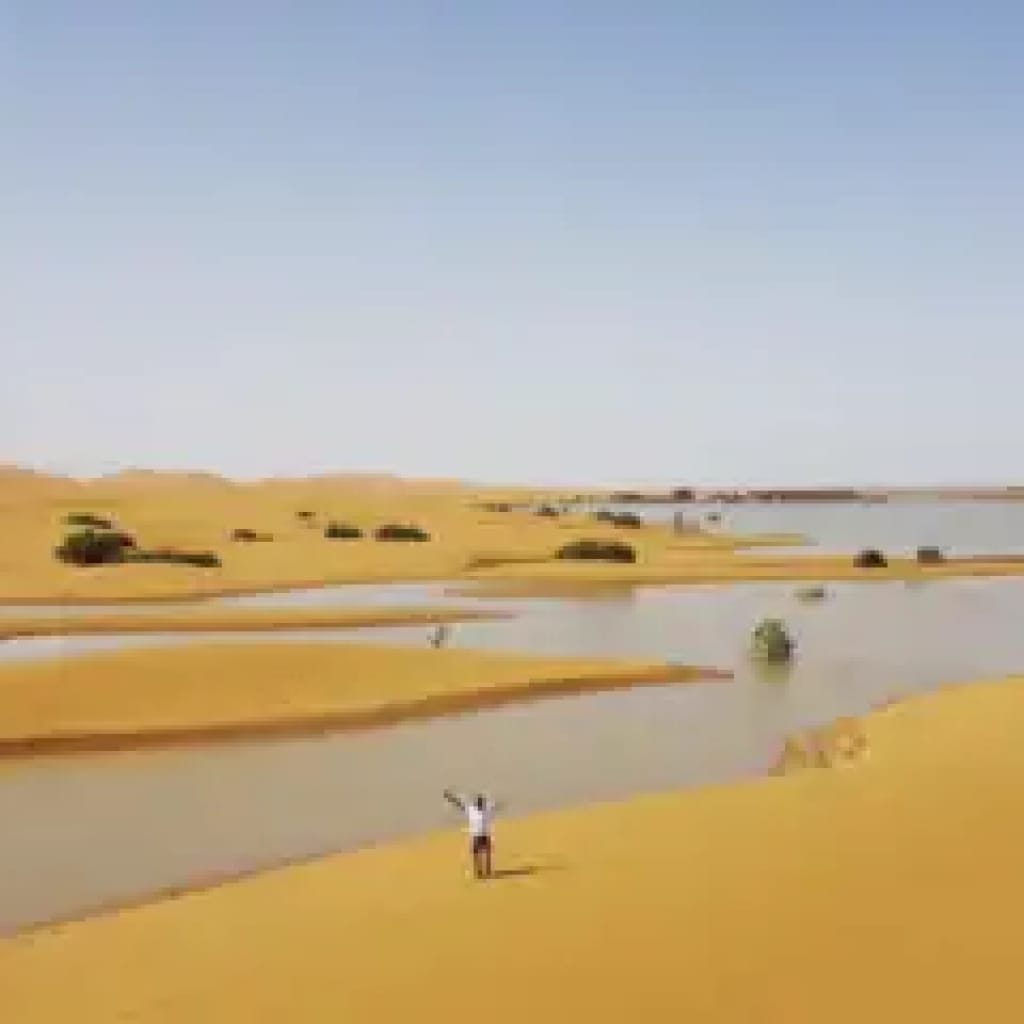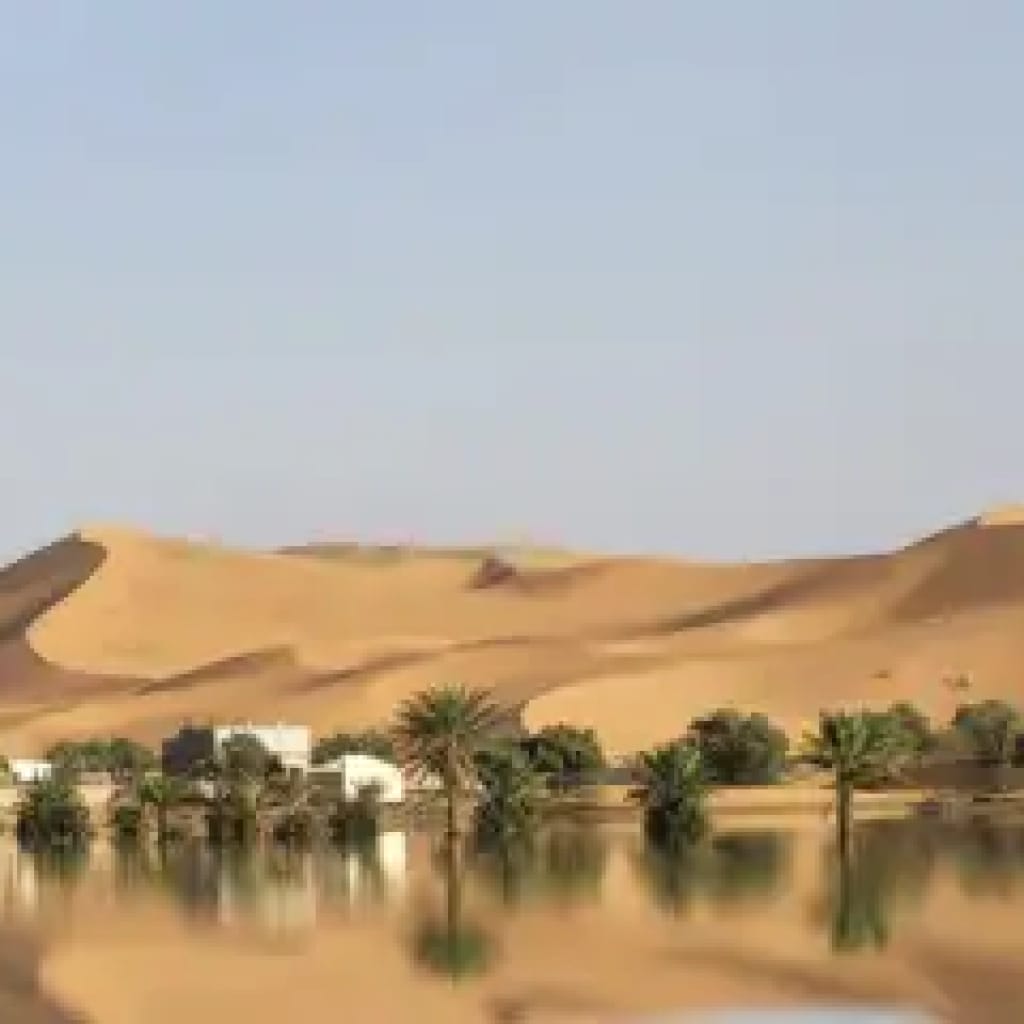A rare downpour transformed parts of the Sahara Desert, creating blue lagoons among palm trees and sand dunes, bringing more water to its arid regions than they had experienced in decades.


The desert in southeastern Morocco is one of the most arid regions in the world and rarely receives rain during late summer.
The Moroccan government reported that two days of rainfall in September exceeded the annual average in several areas that typically receive less than 250 millimetres (10 inches) of rain, including Tata, one of the areas hit hardest. In Tagounite, a village about 450 kilometres (280 miles) south of the capital, Rabat, over 100 millimetres (3.9 inches) of rain fell within 24 hours.
The storms produced striking scenes of water flowing through Saharan sands, weaving around castles and desert flora. NASA satellites captured water rushing to fill Lake Iriqui, a renowned lake bed between Zagora and Tata, which had remained dry for 50 years.
A man gestures as he walks on sand dunes next to a lake caused by heavy rainfall in the desert town of Merzouga
In desert communities frequented by tourists, 4x4s motored through the puddles and residents surveyed the scene in awe. “It’s been 30 to 50 years since we’ve had this much rain in such a short space of time,” said Houssine Youabeb of Morocco’s General Directorate of Meteorology.
Palm trees are flooded in a lake caused by heavy rainfall in the desert town of Merzouga
Such rains, which meteorologists are calling an extratropical storm, may change the course of the region’s weather in months and years to come as the air retains more moisture, causing more evaporation and drawing more storms, Youabeb said.
Morocco has faced six consecutive years of drought, forcing farmers to leave fields uncultivated and prompting cities and villages to ration water. In the desert town of Merzouga, near Rachid, an oasis is now reflected in a lake formed by the heavy rainfall.
The abundant rainfall is expected to help replenish the vast groundwater aquifers beneath the desert, which are crucial for supplying water to local communities. Dammed reservoirs in the region also reported record refilling rates throughout September. However, it remains uncertain how much this rainfall will ease the ongoing drought.
In the desert town of Merzouga, palm trees stand submerged in a lake formed by heavy rainfall. The torrential waters rushing through sands and oases left over 20 people dead in Morocco and Algeria, while also damaging crops. In response, the government has allocated emergency relief funds, including for areas impacted by last year’s earthquake



